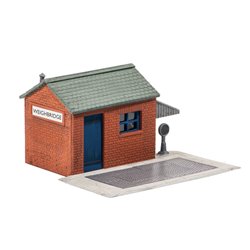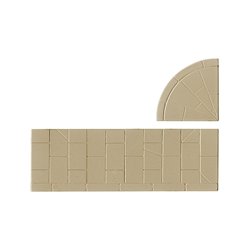There are a number of different options for attaching figures such as a horse and rider to a layout. Perhaps the...
No products
Product successfully added to your shopping cart
There are 0 items in your cart. There is 1 item in your cart.
Search Tips
Historical accuracy in railway modelling: tips and tricks
Railway modelling is a rewarding hobby that combines creativity, craftsmanship, and a passion for trains. For many, achieving historical accuracy in their models is a key aspect of the enjoyment. This article provides tips and tricks for ensuring your railway models are true to their historical context. Understanding the Era
Before starting your model, decide which historical period you want to replicate. British railway history is rich and varied, from the early days of steam in the 19th century to the modern electric trains of today. Each era has its own distinct characteristics in terms of locomotives, rolling stock, architecture, and even signage.
Victorian Era (1837-1901)
This period saw the birth and expansion of the railway network. Look for locomotives like the iconic Stephenson's Rocket or the larger express engines of the later Victorian period. Stations from this era often feature ornate architecture with intricate ironwork and brick detailing.
The Big Four (1923-1947)
This era covers the time when the UK's railway companies were consolidated into the 'Big Four': GWR, LMS, LNER, and SR. Each company had its own distinct style, so research is key. For example, GWR was known for its green livery and broad gauge track.
British Railways (1948-1997)
Nationalisation brought standardisation but also new designs and liveries. The steam to diesel transition occurred in the 1950s and 1960s, so a mix of locomotives can be historically accurate for this period.
Researching Your Model
Accurate research is the foundation of a historically accurate model. Use books, online resources, and visits to railway museums. The National Railway Museum in York is an excellent place to start. Joining a local railway modelling club can also provide access to a wealth of knowledge and resources.
Books and Publications
Look for publications specific to your chosen era or railway company. Magazines like "Railway Modeller" and "British Railway Modelling" often feature articles on historical modelling.
Online Resources
Websites and forums dedicated to railway modelling can be invaluable. The National Railway Museum’s online archives and sites like Rail UK offer a treasure trove of information.
Museums and Heritage Railways
Visiting museums and preserved railways offers a tangible connection to history. Many heritage railways also run events where you can see historical trains in action.
Modelling Techniques
Locomotives and Rolling Stock
Invest in high-quality models that are accurate to your chosen period. Manufacturers like Hornby and Bachmann produce detailed models based on historical prototypes. For added authenticity, weather your models to reflect wear and tear typical of the era.
Scenery and Buildings
Replicate the landscape of the time with accurate buildings, signage, and scenery. Use photographs and historical records to guide your choices. Kits from manufacturers such as Metcalfe and Wills provide detailed buildings that can be customised to match historical prototypes.
Track and Signalling
Track layout and signalling varied significantly between periods and companies. Research the correct type of track, ballast, and signalling for your chosen era. Semaphore signals were common in the steam era, while colour light signals appeared later.
Attention to Detail
Small details can make a big difference. Pay attention to the minutiae like station furniture, advertisements, and even the types of goods carried in freight wagons. These elements bring your model to life and enhance its historical accuracy.
People and Vehicles
Figures and vehicles should match the period. Use historically accurate figures and vehicles to populate your scene. Companies like Nocj, Preiser offer a range of period-specific figures and vehicles.
Weathering and Patina
Real railways show signs of wear and age. Use weathering techniques to add realism to your models. This can include rust on metal parts, grime on locomotives, and faded paint on buildings.
Conclusion
Achieving historical accuracy in railway modelling requires dedication and attention to detail, but the results are well worth the effort. By thoroughly researching your chosen period, using high-quality materials, and focusing on the finer details, you can create a model railway that is both authentic and captivating.
Click here to receive the tips weekly in your mailbox. You can unsubscribe at any time.










